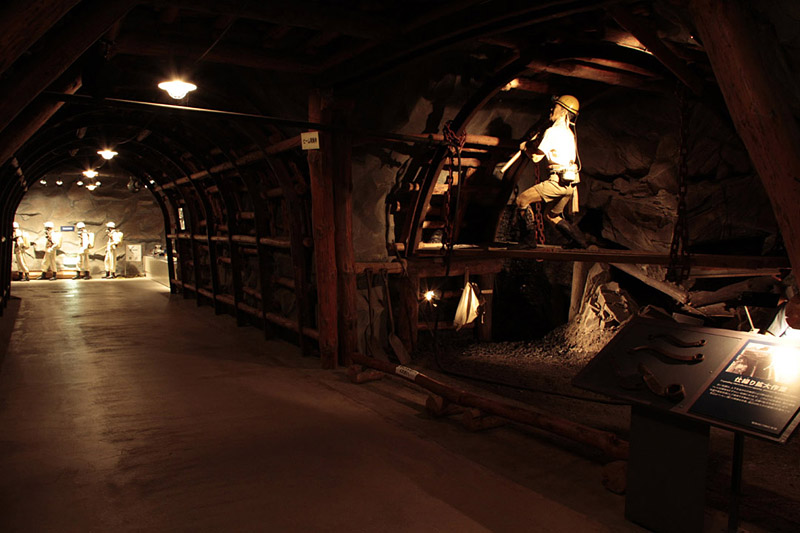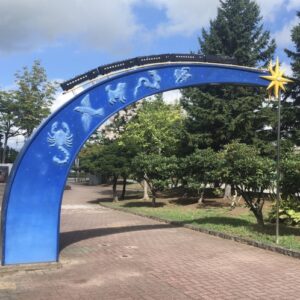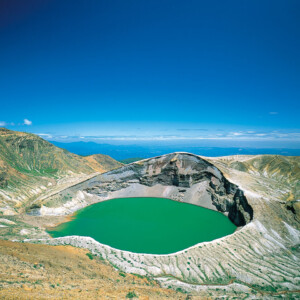
The trajectory of the Joban Line express train "Hitachi", which has been at the mercy of the times but has played a role in connecting the Pacific coast of Tohoku [Miyagi Prefecture and Fukushima Prefecture]
table of contents
The limited express Hitachi is a limited express train that runs from Shinagawa Station in Tokyo to Iwaki Station in Fukushima Prefecture or Sendai Station in Miyagi Prefecture via JR East's Joban Line As of March 2024, there are 15 round trips per day, which is the highest frequency among current limited express trains on conventional lines. In this article, we will introduce the trajectory of the limited express Hitachi from its birth to the present day.
*The sections between Shinagawa Station and Nippori Station in Tokyo, and between Iwanuma Station and Sendai Station in Miyagi Prefecture, are not exactly Joban Line lines, but for the sake of brevity, this article will cover all lines on which Hitachi is operated. The section is called the "Joban Line."
Introducing the limited express “Hitachi”
The limited express train ``Hitachi'' first appeared in October 1969 when the Japan National Railways (predecessor of JR) revised their timetables. At that time, the service only ran from Ueno Station in Tokyo to Taira (now Iwaki) Station in Fukushima Prefecture, with one train leaving Ueno and going to Taira in the evening, and one train leaving Taira and going to Ueno the next morning. did.
The name of the limited express train ``Hitachi'' is derived from ``Hitachi'', the former name of the country that mainly refers to present-day Ibaraki Prefecture. There is a station called "Hitachi" on the Joban Line, and there is also a famous large company along the line that bears that name, but this is not the origin of the name.

Author: Gohachiyasu1214 – Work by the author himself, CC Attribution-Share Alike 4.0, https://commons.wikimedia.org/w/index.php?curid= by 76865625
At the time of its debut, the vehicle was not a train like the current Hitachi a Kiha 81 series diesel train that ran on diesel fuel . was a vehicle used by the limited express Hatsukari which operated between Ueno Station and Aomori Station via the Joban Line In other words, the Kiha 81 series has returned to the Joban Line for the first time in just one year.
At the time of its introduction, the Hitachi was a seasonal train, but a year later, in October 1970, it became a regular train that operated year-round.

Author: spaceaero2 – Photographed by himself, CC Attribution 3.0, by https://commons.wikimedia.org/w/index.php?curid=10650012
From October 1972, the vehicle was changed to the ``485 series electric train'', At this time, the Hitachi, which runs 362.9km between Ueno Station and Sendai Station, began to operate once a day. The time required for the outbound train from Ueno Station to Sendai Station was 4 hours and 34 minutes, so the stated speed (average speed including stopping time) was 79.5 km/h. It was quite fast for a limited express train other than the Shinkansen at the time. Then, the number of shots increases will be repeated.
In 1982, the Tohoku Shinkansen opened from Omiya Station in Saitama Prefecture to Morioka Station in Iwate Prefecture, and was extended to Ueno Station in 1985, but it had no direct impact on Hitachi.
The Joban Line seems to overlap with the Tohoku Shinkansen in that it connects the Tokyo metropolitan area and Sendai. When I was a child, I also wondered, ``Why is there a limited express train between Ueno and Sendai when there is a Shinkansen train?'' However, the Joban Line is not a line that runs parallel to the Tohoku Shinkansen, and the stopovers along the way are completely different from the Tohoku Shinkansen. That's why the limited express ``Hitachi'' remained as it was. On the other hand, most limited express trains disappeared from the Tohoku Main Line, which runs parallel to the Tohoku Shinkansen, due to the opening of the Tohoku Shinkansen.
Amazing guy with a tuxedo body
In 1987, Japan National Railways was split and privatized, and all sections of the Joban Line were inherited by JR East. Of course, the company that operates Hitachi is JR East.
Although demand for the Hitachi was strong, it was exposed to competition from express buses running on the Joban Expressway. Therefore, JR East, which had just been launched, decided to develop a new type of train that would surpass the 485 series trains used in the Hitachi train in terms of speed and interior comfort. the 651 series train , which began commercial operation in March 1989 . The maximum speed is higher than the 120 km/h of the 485 series, and is the first non-Shinkansen limited express train to reach 130 km/h.

The car body was painted in white and was called
the ``tuxedo body.'' The front of the train was equipped with an LED display, which was a novelty at the time, and displayed information such as the train name. The interior of the train was specially designed with business passengers, the main customer group, in mind, and has a calm interior. It was about two years after JR was established, and two months after the era name changed from Showa to Heisei, and in many ways it was a vehicle that felt like a new era.
The Joban Line limited express trains using the 651 series ``Super Hitachi'' , making them easily distinguishable from the 485 series limited express ``Hitachi.'' The time required for the Super Hitachi train between Ueno Station and Sendai Station was 4 hours and 19 minutes, and the stated speed was 84.1km/h. For the 117.5 km distance between Ueno Station and Mito Station (Ibaraki Prefecture), the travel time was 1 hour and 6 minutes, and the posted speed was an astonishing 106.8 km/h. The catchphrase "A guy with an amazing tuxedo body"

In October 1997, a new model, the E653 series train, was introduced and began operating as the Fresh Hitachi The following year, in December 1998, the 485 series was retired, and the Joban Line has two limited express trains: the 651 series ``Super Hitachi'', which is an express type with few stops, and the E653 series ``Fresh Hitachi'', which has many stops. It became a system.
Since then, the time required for Super Hitachi has been gradually shortened, and in December 2010, the timetable was revised to reduce the travel time between Ueno Station and Sendai Station to 4 hours and 9 minutes.
Unexpected end of direct service to Sendai Station
However, immediately after the timetable revision in December 2010, JR East made a major announcement regarding limited express trains on the Joban Line. The theme of the announcement was that a new type of train would be introduced to the Joban Line limited express trains starting in the spring of 2012, replacing the 651 series. is the "E657 series train" that is currently being used for limited express trains on the Joban Line as of 2024
However, what shocked people in areas along the line more than the introduction of new vehicles was the end of service of the limited express train that ran directly between Ueno Station and Sendai Station. With the introduction of the E657 series, limited express trains using the E657 series will only operate between Ueno Station and Iwaki Station, and limited express trains with a new name using the E653 series will operate between Iwaki Station and Sendai Station. That's how it was.
Regarding the elimination of direct trains from Ueno Station to Iwaki Station and north, there seemed to be some opposition, especially from Hamadori in Fukushima Prefecture, such as ``Tokyo will become further away because there will be no direct trains to Tokyo.'' In February 2015, a public call for nicknames for the new limited express train was held, and the division of the operating sections of the Joban Line limited express train proceeded as a matter of default. The application period was closed, and the results were scheduled to be announced in April, but JR East never announced a new nickname.
This is because on March 11th, the great disaster and accident that you are aware of occurred.
"Super Hitachi No. 15" which was operated bound for Haranomachi in Fukushima Prefecture was waiting to return to Ueno Station as "Super Hitachi No. 50" after arriving at the final stop, Haranomachi Station. The accident occurred while I was waiting. The four-car 651 series train remained at Haranomachi Station for five years, and was scrapped without ever running again.
Since March 2011, the section of the Joban Line that passes through Hamadori has been forced to suspend operations for an extended period of time, and of course the Super Hitachi train has been unable to operate north of Iwaki Station. With the timetable revision in March 2012, the "Super Hitachi" line that directly connected to Sendai Station was officially abolished on the timetable. Although the circumstances were completely different from JR East's intentions announced in December 2010, it ended up being exactly as announced.

The new E657 series was released on schedule in March 2012, and the 651 series was scrapped and converted to the Takasaki Line limited express, and the E653 series began to be converted to the Uetsu Main Line limited express. The following year, in March 2013, ``Super Hitachi'' and ``Fresh Hitachi'' trains were operated with the E657 series (however, the 651 series was revived from October 2013 to March 2015). In March 2015, ``Super Hitachi'' was renamed to ``Hitachi,'' and was renamed to ``Tokiwa the ``Ueno Tokyo Line'' in Tokyo, and many trains, ``Hitachi'' and ``Tokiwa,'' began running into Shinagawa Station. As of 2024, all Hitachi trains depart from Shinagawa Station on the outbound train and go to Shinagawa Station on the upbound train.
All line operations resumed
In July 2019, JR East announced that it would resume operations on the entire Joban Line in March 2020.
This is the first time in nine years that the entire line has resumed operation. The announcement regarding limited express trains on the Joban Line once again surprised many people. It was announced that the limited express train would run three round trips a day, directly connecting Tokyo and Sendai.
In recent years, when JR's long-distance trains have been disappearing nationwide, this ``resurrection'' of long-distance express trains can be described as an anomaly. Moreover, it was decided in 2010 that the limited express trains on the Joban Line would be divided at Iwaki Station, so this has been reversed. From JR East's posters and statements from its president at the time, it appears that they wanted the existence of a limited express train connecting Tokyo and Sendai to be a symbol of the resumption of service on all lines, and a message that Tokyo was connected to Hamadori, Fukushima Prefecture. You can The author also speculates that the demand for direct connections between Tokyo and Hamadori is increasing compared to before due to reconstruction projects.
On March 14, 2020, the limited express Hitachi began running to Sendai Station for the first time in nine years as a limited express train on the Joban Line. The meaning of the return of direct trains to Sendai is not just a symbol of the resumption of service on the entire line. After the entire Joban Line resumed operations, the Tohoku Shinkansen, which is the main artery that runs through the Tohoku region, was frequently rendered inoperable due to earthquakes and equipment accidents. In each case, the limited express Hitachi served as the only train connecting the Tokyo metropolitan area and Sendai, transporting passengers who were unable to travel on the Tohoku Shinkansen. It can be said that there was great significance in the fact that it took nine years to finally resume operation on the entire Joban Line, and that direct trains to Sendai were running during normal times.
Joban Line and Joban Coalfield

The Joban Line, on which the limited express Hitachi runs, is now primarily used for commuter transportation in the Tokyo metropolitan area and long-distance transportation between the Tokyo metropolitan area and the Tohoku region, but in the past, freight trains frequently operated. It had been. One of the purposes for which the Joban Line (note: it was named ``Joban Line'' in 1909) was created at the end of the 19th century was to transport coal produced in the Joban coalfields It is said that it was. With the opening of the Joban Line and the ability to quickly transport coal, development of the Joban coalfield progressed.
A facility where you can experience the history of the Tokiwa Coalfield is now open as ``Iwaki City Coal and Fossil Museum Horuru'' The limited express Hitachi also stops at Yumoto Station, making it possible to access from the Tokyo metropolitan area and Sendai with just one train.

Additionally, due to the energy revolution of the 1960s, the Joban coalfield also declined as coal mines were closed, but consideration was given to opening a resort facility in the image of the "dream island of Hawaii" Although the plan to convert from a coal mining industry to a tourism industry seemed far-fetched, it was a huge success and the facility is now known as Spa Resort Hawaiians
The nearest station here is Yumoto Station, and it can be accessed from the station in about 15 minutes by free shuttle bus.
Iwaki City Coal and Fossil Museum <Information>
- Name: Iwaki City Coal and Fossil Museum (Horuru)
- Address: 3-1 Mukoda, Tokiwa Yumotocho, Iwaki City, Fukushima Prefecture
- Phone number: 0246-42-3155
- Official URL: Iwaki City Coal and Fossil Museum Horuru
- Closed: Third Tuesday (the following day if it is a holiday), January 1st
- Opening hours: 9:00-17:00 (Admission until 16:30)
Google Maps
Spa Resort Hawaiians <Information>
- Name: Spa Resort Hawaiians
- Address: 50 Warabidaira, Tokiwa Fujiwara-cho, Iwaki City, Fukushima Prefecture
- Phone number: 0570-550-550 (9:00-17:30)
- Official URL: [Official] Spa Resort Hawaiians Home Page
- Opening hours: 10:00-21:30 (varies by facility, last entry is 1 hour before closing)
Google Maps
summary
Since its introduction in 1969, the Joban Line limited express trains have continued to play an important role in connecting the Tokyo metropolitan area and the Pacific coast region of Tohoku. At one time, it was decided to split the service at stations along the way, and immediately after that, the line was at the mercy of an unprecedented disaster.
However, Hitachi continues to run today, connecting Tokyo with Iwaki and Sendai, and carrying with it people's hopes for the reconstruction of the Tohoku region. Why not try using the limited express Hitachi, which is convenient for sightseeing along the Joban Line, such as Iwaki City.




![Scary and slightly sad stories... "Michinoku Otogi Kaido" with many stories left behind [Shichigasyu-cho, Shiraishi City, Miyagi Prefecture] Fairytale images](https://jp.neft.asia/wp-content/uploads/2023/04/be73b392233d2fe609797e999f8ca547-1-150x150.jpg)

![Kurikoma foot Geopark learned from large-scale landslide disasters [Miyagi Prefecture] Autumn leaves of Mt. Kurikoma](https://jp.neft.asia/wp-content/uploads/2023/08/22090138_m-150x150.jpg)
![A report on the experience of "Whiskey Collection Koriyama," Tohoku's first whiskey event! [Fukushima Prefecture] Whiskey Collection Koriyama](https://jp.neft.asia/wp-content/uploads/2024/10/IMG_0751-EDIT-150x150.jpg)
![Appears in the first episode of the anime "Zatsu Tabi - That's Journey"! Let's go to Aizuwakamatsu City [Fukushima Prefecture] 30948239_m](https://jp.neft.asia/wp-content/uploads/2025/05/30948239_m-150x150.jpg)
![The place you should not come and the phantom checkpoint "Nakura no Seki" written in waka poetry [Fukushima Prefecture] 0438-016](https://jp.neft.asia/wp-content/uploads/2022/11/0438-016-150x150.jpg)
![[Tohoku] Where should we go during Golden Week in 2023? How about visiting zoos and aquariums in Tohoku? 26245129_m](https://jp.neft.asia/wp-content/uploads/2023/04/26245129_m-150x150.jpg)











